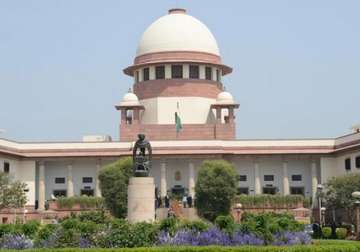New Delhi: With the collegium system staging a comeback after a gap of six months, it has its task cut out -- to fill over 400 vacancies in high courts and appointing full-time chief justices in eight states.
The government on its part will have to decide on nearly 120 recommendations made by the collegium before the system was overturned by the National Judicial Appointments Commission Act (NJAC) which came into force on April 13.
In a landmark judgment on Friday, the apex court had struck down as unconstitutional the NJAC Act that was brought in to replace the over two-decade-old collegium system of judges appointing judges in the higher judiciary.
The judgment, that will enable the collegium system to continue, also declared as unconstitutional the 99th amendment to the Constitution to bring in the NJAC Act.
As per the data collated by the Department of Justice in the Law Ministry, as on October 1, there were 406 vacancies in the high courts. The approved strength of the 24 high courts is 1,017 and they are at present functioning with 611 judges.
The data states that the High Courts of Bombay, Andhra Pradesh and Telangana, Punjab and Haryana, Karnataka, Patna, Rajasthan, Gujarat and Gauhati have acting chief justices.
While the new law scrapped the collegium system, the Chief Justice of India had refused to take part in a meeting with the Prime Minister of the selection committee of the panel under the NJAC law, thus leaving the new system in a limbo.
Therefore, no judge could be elevated as chief justice of a high court, transferred to another high court or elevated to the Supreme Court as there was no system in place for the purpose.
With no system in place to elevate judges as chief justices of high courts, the high courts of Gauhati, Gujarat, Karnataka, Patna, Punjab and Haryana, Rajasthan and the Andhra Pradesh and Telangana high court are at present headed by acting chief justices.
According to Law Ministry officials, Article 223 of the Constitution states that when the office of the Chief Justice of a high court is vacant or when any such Chief Justice is, by reason of absence or otherwise, unable to perform the duties of his office, the duties shall be performed by one of the other judges of the court as the President may appoint for the purpose.
Government had used this provision recently to appoint acting chief justices in some high courts.
To overcome shortage of judges, government had also recently sought permission of the apex court to give extension to additional judges in various high courts whose tenure of two years was coming to an end.
Except for Meghalaya, Sikkim and Tripura, the rest of the 21 high courts faced shortage of judges. The Allahabad High Court had a shortage of 85 judges as on October 1.
Latest India News
